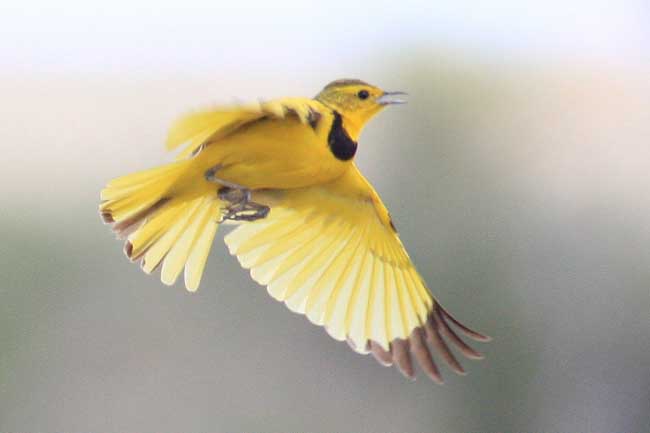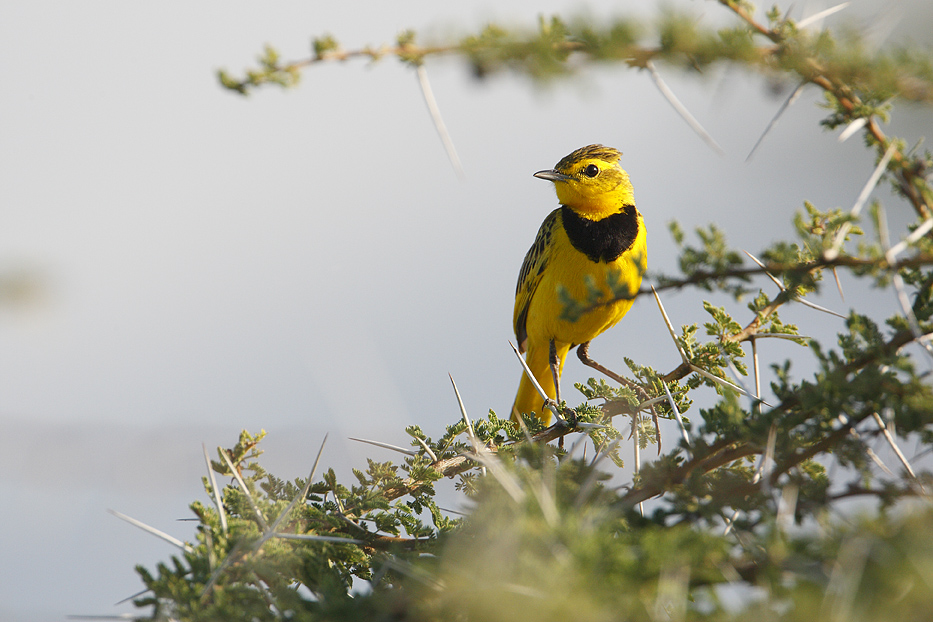
Tmetothylacus tenellus
TAXONOMY
Macronyx tenellus Cabanis, 1878, Taita, southeast Kenya.
OTHER COMMON NAMES
French: Pipit dorй; German: Goldpieper; Spanish: Bisbita
Dorada.
PHYSICAL CHARACTERISTICS
5.1–6.3 in (13–16 cm); 0.6–0.8 oz (18–22 g). Mottled brown
from forehead to rump; golden-yellow underparts, cheek, and
brow with black bib across throat.
DISTRIBUTION
Western Somalia and Ethiopia, west to southeast Sudan and
south to southern Tanzania; vagrant to the north in Oman and
south to northern South Africa.
HABITAT
Arid or semi-arid grassland with bushes and small trees, usually
up to about 3,300 ft (1,000 m) above sea level.
BEHAVIOR
Territorial when breeding, otherwise often in family groups or
parties. Rather shy; frequently perches on trees or bushes, wagging
tail. Displays by fluttering up and then gliding to ground,
showing yellow in spread wings and tail. Migratory; marked influxes
during rains.
FEEDING ECOLOGY AND DIET
Insectivorous, taking prey from ground or grass stems.
REPRODUCTIVE BIOLOGY
Monogamous. Breeds November through May, during rains.
Nest is a cup of grass and stems, lined rootlets, hidden low in a
bush; lays two to four eggs.
CONSERVATION STATUS
Not threatened; sometimes locally abundant after rains.
SIGNIFICANCE TO HUMANS
None known.
Other popular Animals
Photo Gallery of - Golden pipit




 Animalia Life
Animalia Life